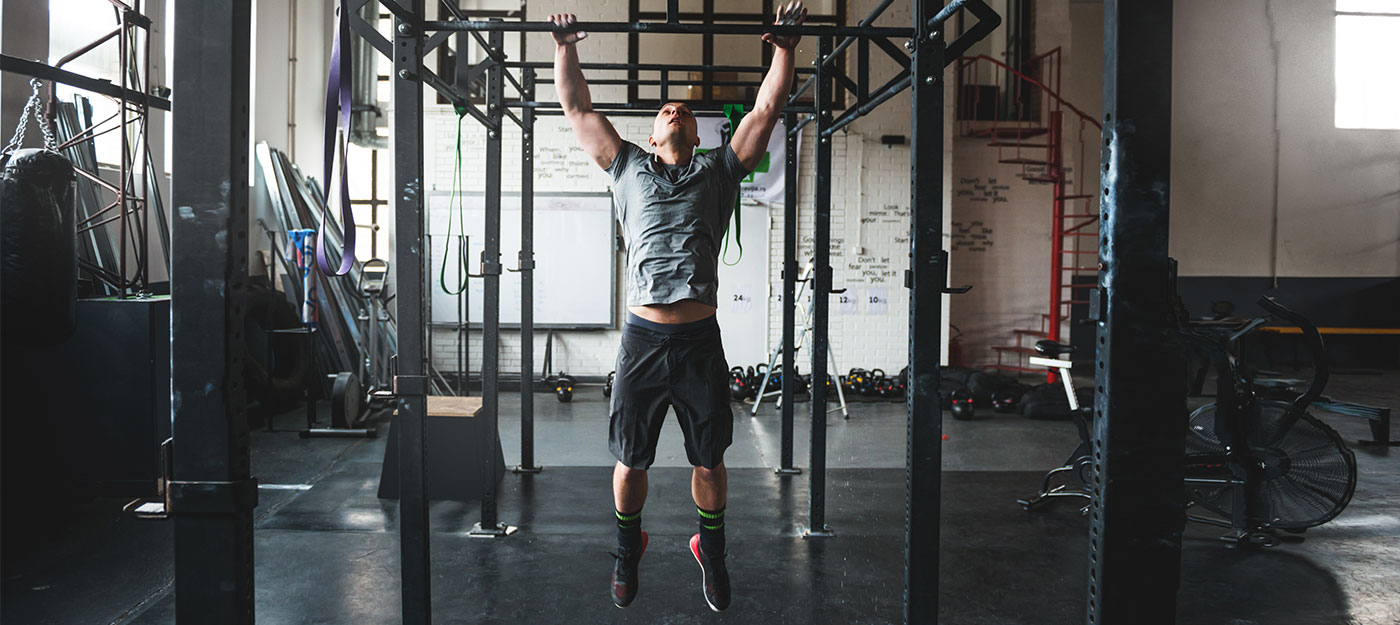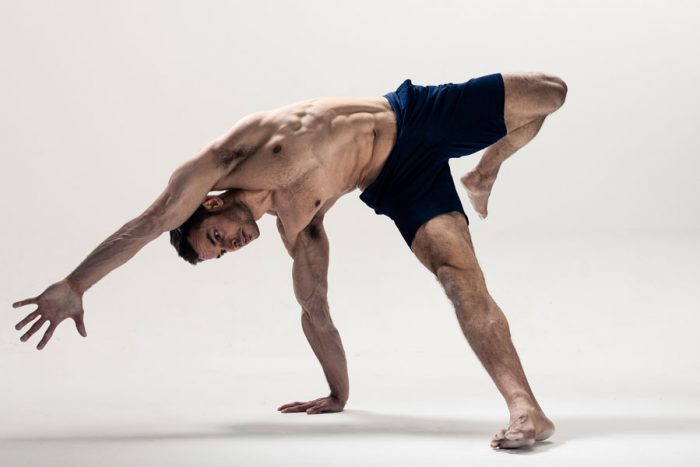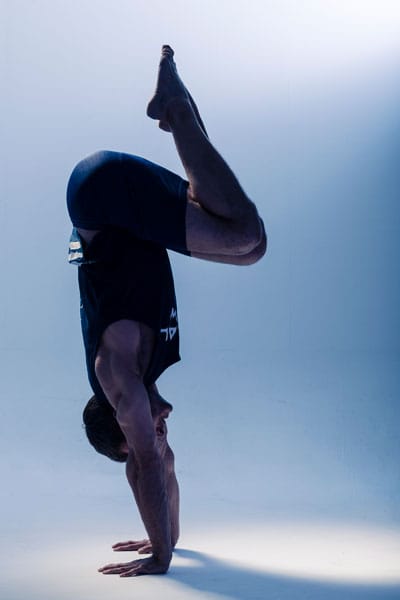
Programming for the Skill of Movement
You’d be hard-pressed to find a more well-rounded fitness professional than UK Master Instructor, Rich Scrivener. With more than 22 years of experience as an educator, advisor, personal trainer, and strength and conditioning coach across a range of disciplines, there’s no denying that Rich knows training.
Even a quick glance at Rich’s typical training week shows that he’s got his routine dialled in. There’s mobility, lifting, Animal Flow, rowing, hiking, and kettlebells. Most days feature multiple sessions, an undertaking that’s understandable if, like Rich, you work in fitness and you’re working towards a range of outcomes.
But what if you’re a mere mortal looking to balance your training week with varied interests and external commitments? We picked Rich’s brain on the best way to tackle programming when you’re more interested in participation than perfection.
AFHQ:

What’s important to you when you’re considering what goes into a training week?
Rich:
The philosophy that underpins my style of training is based on the understanding that if you don’t need to be really good at one thing, then you’re probably better to have a bit of a cross-training approach.
If you’re an Olympic athlete or you want to be really good at a particular sport, then you need to put as much time as you can into that. That’s the only way that you’ll actually become good enough to be successful if you’re competing or to meet any high-level goals you have in that discipline. But from a health and fitness perspective, if you’re not aiming to be elite, then there are a range of elements that I look for in programming.
AFHQ:
If I’m not aiming to be elite and specialization isn’t important for any reason, what would create a well-rounded program?
Rich:
Let’s start from an example where someone is completely open to the idea of being advised. We’re removing the component of what they enjoy and focusing solely on what’s best for them.
In that case, I’d want to have some kind of training that focuses on motor control, which is really just ‘movement quality.’ I think that’s underpinned by good mobility so I’ll either have some mobility incorporated into a movement session or included as a standalone session in the program so that we’re continuously improving mobility across all body segments.
I also think that it’s important to be strong. Typically, the stronger you are, the more capable you are across the board. I remember (Australian sports scientist) Robert Newton saying that if all else is equal, stronger athletes predominate.
So, in any given week, if you can have a session that you dedicate to strength-either the preservation or development of strength-that’s important. It has great crossover to almost everything else.
I’m looking for things that give you a great baseline; I also think that a baseline level of cardio fitness is valuable. Being aerobically fitter helps to stave off disease; it’s great for a range of health benefits. I always endeavour to include a couple of cardio sessions in a week.
AFHQ:
We’ve got motor control, mobility, strength, and cardio. Is there anything else you categorize as a training need?
Rich:
I’m also a fan of preserving muscle. When we’re younger, particularly for men, perhaps we’re more interested in that for aesthetic reasons.
As one gets older, preserving or potentially building muscle is important for two reasons: 1) muscle contributes to force production, which relates to being strong, and 2) muscle has been discovered to potentially be health-promoting and cardioprotective.
To me, preserving or gaining muscle is almost an approach to anti-aging. Quality of life is drastically affected by strength and lean muscle tissue. Arriving in our seventies, eighties and nineties with as much of both as we can is a valuable strategy for longevity.
AFHQ:
Besides these five areas, what else do you consider when you’re designing a program for someone?
Rich:
I see myself as somewhat of a guardian of people’s health and fitness so while I’ll never force someone to do something they don’t enjoy, I’ll always gently nudge them towards at least getting a baseline level of all the things they need.
I then like to look at what they enjoy. While I’m quite intrinsically motivated and do whatever it is that I know I need to do, no matter how dull or boring it may seem, I understand that not everyone is the same. Enjoyment can be a really vital part of helping someone stick to physical activity. I try to understand what clients like, what makes them tick, and then merge and amalgamate the things they need with the things they like.
AFHQ:
So, how do you determine how all of that fits into the training plan?
Rich:
It’s really easy to write the perfect plan on a piece of paper but the reality is that most people don’t have the ability to train twice a day. So, I like to start with what I’d consider to be an ideal program based on their goals and then I work backwards from there, taking into account any limitations or restrictions.
Perhaps they’ve got a hectic job, a two-hour commute, a family, etc. I take all of that into account, figuring out where the pieces can fit and whether they are willing to make changes to any of their existing routines.
I might have a conversation with them about the reality of their goals and the length of the roadmap required to get them there.
AFHQ:

Let’s say that I want to improve at a Tuck Balance or another skill within my Animal Flow practice but I’m limited on time. How can I get the best results out of the time I have available?
Rich:
It depends on the individual, but as a general rule, I’m looking for ways to focus on adding more skill-specific work without compromising the strength training, muscle stimulus and cardio.
If we use the example of trying to improve at the Tuck Balance, I try to make my resistance training complementary and positive towards improving that skill.
For instance, my shoulders are an area that I’m working on. I try to strip down the resistance work that might tighten up my shoulders. If I’m doing too much bench press, for example, that will have a negative impact on the shoulder range that I need for a Tuck Balance. That’s moving me further away from the skill I’m pursuing.
So, instead, if I’m wanting some kind of stimulus for my chest, I’m going to select exercises that actually have an opening effect on my posture. Perhaps I’m doing a dumbbell fly or cable fly and focusing on a really long eccentric, or lowering phase, with a big pause at the bottom where the shoulders are fully opened up.
Another example is a behind the neck barbell military press. Just by going to the back of the shoulders, you’ve positioned the shoulders to be in a more externally rotated position. I’m going to go with a narrow grip to mimic the position in the Tuck Balance. At the end, I’m going to finish it with a shoulder shrug to ‘close the gap’ as we do in the Tuck Balance itself.
I’m taking all my regular movements and modifying them to be complementary to what I’m trying to achieve. I’m looking at the skill from the perspective of, ‘What do I need more of to be better at this movement?’
Check out these four upper body exercises below. Rich likes these for focusing on building strength in end ranges. This means that he’s continuing to maintain his shoulder range for successful Tuck Balance training.
AFHQ:
Are there any other ways that you can slot these types of movements into your training week without having to give up the other things you enjoy?
Rich:
Absolutely. If, for instance, I’m going to be training my upper body, I’ll also look for ways to include things such as warm-ups. I make sure that the choices I make are preparing me for the training session, but also map across to the Tuck Balance, too.
Perhaps I’m doing Floor Swimmers or some Form Specific Stretches; maybe I’m doing some drills where I’m walking up and down a wall like in hand balancing. It’s a nod to the skill without making it the focus; it complements it. I’m not doing anything that would be detrimental to the goal.
There really are so many opportunities to have these frequent, little wins in your regular training sessions that contribute hugely to your skill development.
Quick tips from Rich
- Pairing strength with movement or mobility: try super-setting a resistance exercise with a complementary mobility movement. For example, you might pair a dumbbell row with a mobilizer for the lats and triceps.
- Frequency is better than volume: when it comes to improving your range of motion, aim for shorter but more regular exposure. More ‘touches’ each week is better for skill development, too. Aim for consistency over duration.
- Auto-regulate based on your body: if you’re waking up in the morning and feeling inflamed or tender, consider dialling down the intensity, duration or frequency of your practice.
Rich’s Typical Training Week
- A.M.: 30 min mobility and 15 min Tuck Balance drills
- P.M.: Weightlifting (Snatch and Clean & Jerk drills)
- Prep and teach Animal Flow classes and sessions (4hrs)
- P.M.: 30 min pull strength
- Lunch: 5 x 500m rowing intervals conditioning
- P.M.: 45 min Kettlebell strength
- Prep and teach Animal Flow classes and sessions (4hrs)
- P.M.: 30 min pull strength
- A.M.: 30 min mobility and 15 min Tuck Balance drills
- P.M.: Squat and Overhead Press strength, Tabata row conditioning
- Either Animal Flow workshop; or
- Rest and 2-3 hr hike in the countryside
Join Rich at one of his upcoming Level 1 or Level 2 Animal Flow certification workshops in the UK and Europe. For upcoming course dates and full details, check out the Workshops page on the Animal Flow website.
